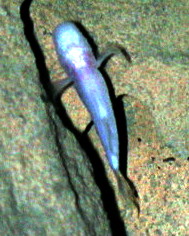Facts About Typhlichthys subterraneus
The southern cavefish, scientifically known as *Typhlichthys subterraneus*, is a captivating species of cavefish belonging to the Amblyopsidae family. This unique fish is indigenous to the karst regions of the eastern United States. It is one of five species within its family that exclusively inhabit caves, classifying it as an obligate troglobite. Currently, it is the sole recognized species in the *Typhlichthys* genus, though scientists speculate it may actually comprise a complex of several cryptic species.
First described by Charles Frédéric Girard in 1859 in Kentucky, the southern cavefish has been the subject of various taxonomic debates over the years. For instance, species such as *T. osborni* and *T. wyandotte* were previously considered part of this genus but are now generally regarded as invalid. However, recent genetic studies suggest the existence of distinct populations within *T. subterraneus*. There is even a possibility that the population in the Ozark Highlands could constitute a separate species, referred to as *T. eigenmanni*.
The southern cavefish can be found across several southern states, including Indiana, Alabama, Kentucky, Georgia, Missouri, Tennessee, Arkansas, and Oklahoma. It thrives in subterranean waters in areas such as the Ozark Plateau, Cumberland Plateau, and Interior Low Plateau. These fish are mostly solitary and tend to be isolated from one another.
Ecologically, *T. subterraneus* prefers still-water habitats but can also be found in stream pools near water tables. Their diet consists mainly of aquatic arthropods. Notably, one of the interesting aspects of this species is its low reproductive rate, with females laying fewer than 50 eggs.
From a conservation perspective, the southern cavefish is listed as Near Threatened on the IUCN Red List. It faces several threats, including pollution, declining water tables, reservoir flooding, and cave vandalism. To help protect this unique species, conservation efforts focus on preserving its habitat and mitigating environmental threats.

 Canada
Canada